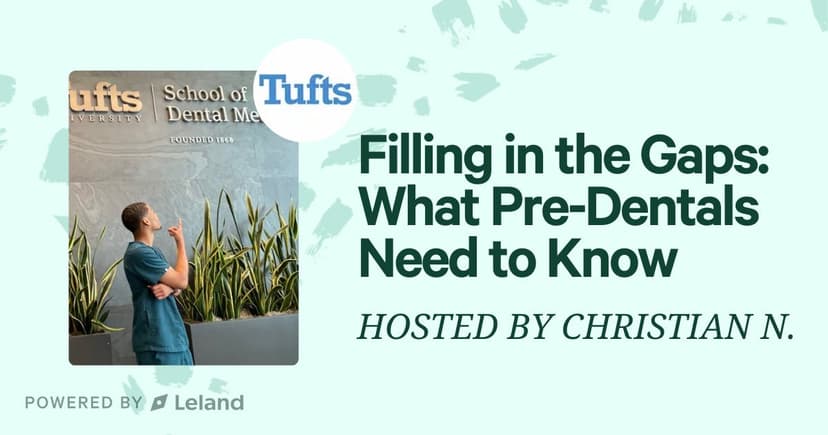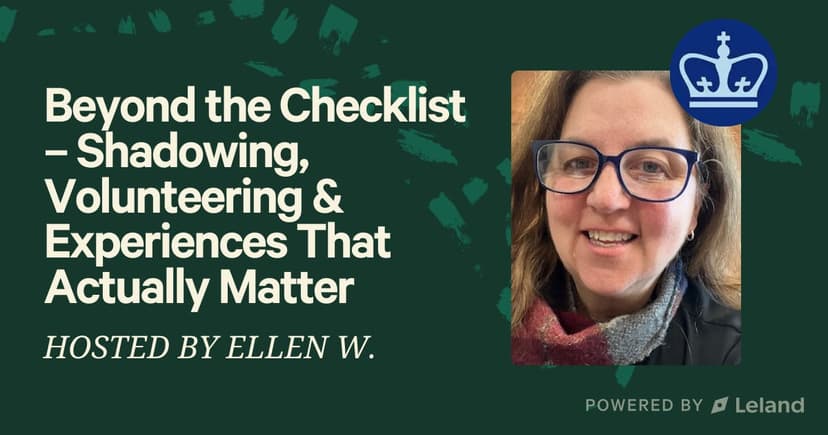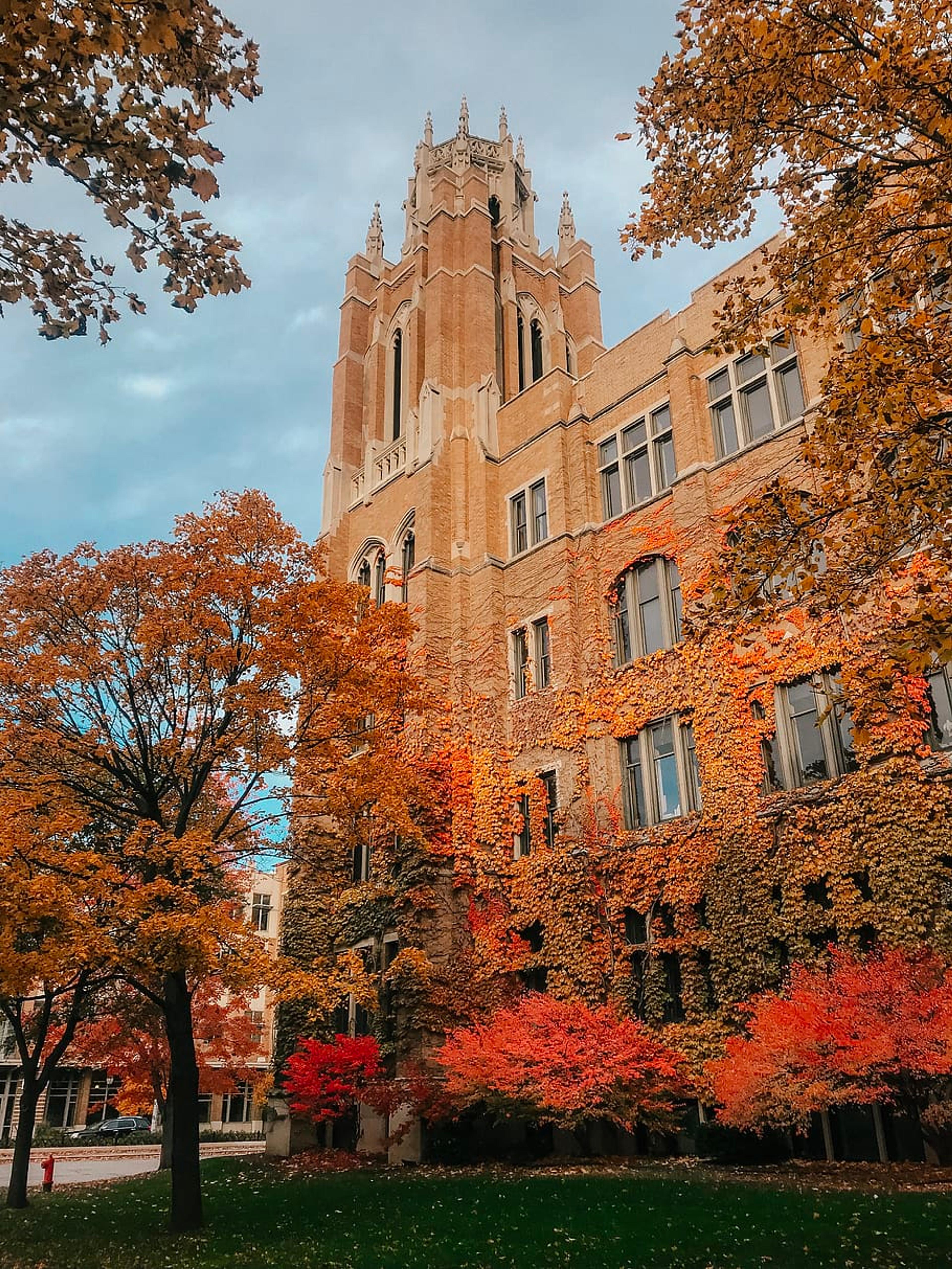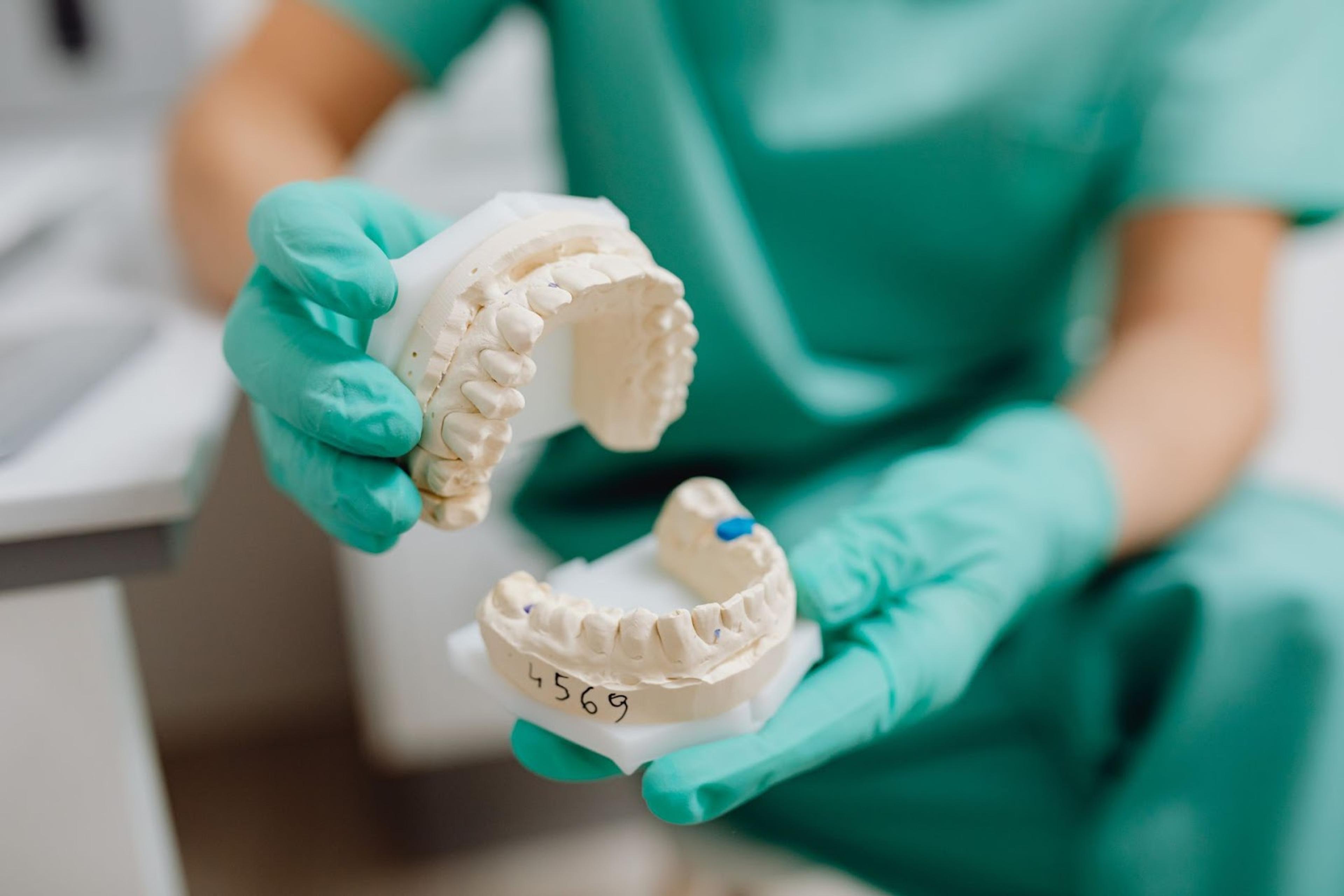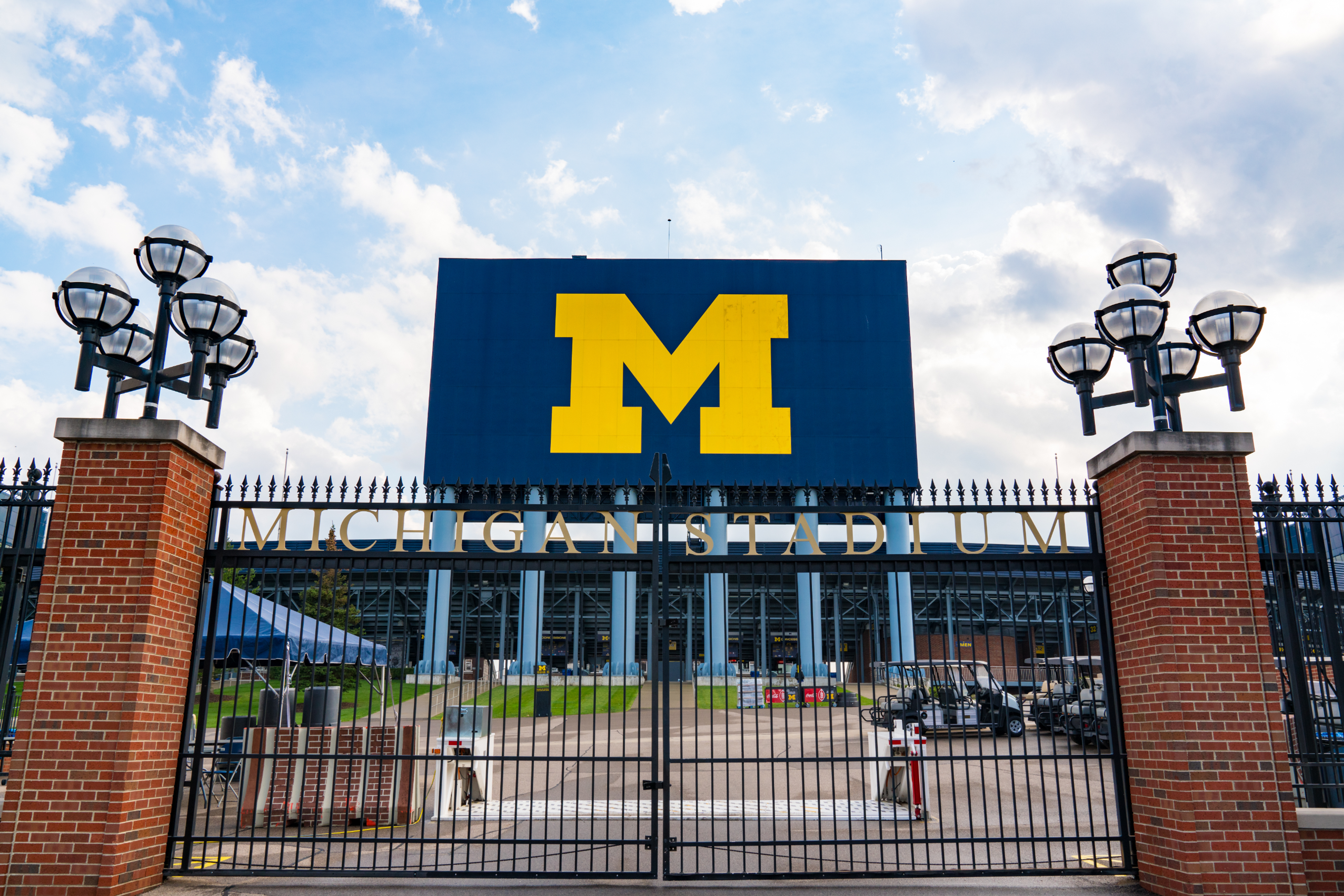How to Become a Dentist in USA: A Guide for International Applicants
Learn how to become a dentist in USA as an international applicant, from meeting education requirements to earning licensure through advanced programs.
Posted June 13, 2025

Join a free event
Learn from top coaches and industry experts in live, interactive sessions you can join for free.
Table of Contents
For many international dental graduates, continuing their careers in the United States is a major goal, whether it's to practice general dentistry, pursue a dental specialty, or work in a more advanced healthcare setting.
The process isn’t simple. It takes time, planning, and persistence. But every year, thousands of foreign-trained dentists make it happen. This guide breaks down what it actually takes to get into a U.S. dental school, from meeting educational requirements to passing entrance exams, applying to advanced standing programs, and earning a license to practice dentistry.
What It Takes to Become a Dentist in the USA
Becoming a dentist in the United States as an international applicant involves meeting specific academic and licensing requirements. While the standard path for U.S. students typically takes about eight years, four years of undergraduate study followed by four years of dental school, becoming a dentist requires a significant commitment to education and training. International dental graduates may be eligible for a shorter route through advanced standing programs. These are designed for foreign-trained dentists who already hold a dental degree from another country.
To practice dentistry in the U.S., you must complete a degree from a CODA-accredited dental school, pass required board exams, and obtain state licensure. The most common dental degrees awarded in the U.S. are the Doctor of Dental Surgery (DDS) and the Doctor of Dental Medicine (DMD). These degrees are identical in curriculum, training, and scope of practice, some schools simply use one title over the other.
Common Types of Dental Degrees
| Degree Type | Full Form | Duration | Purpose |
|---|---|---|---|
| DDS | Doctor of Dental Surgery | 4 years | Required for dental licensure; prepares for general dentistry |
| DMD | Doctor of Dental Medicine | 4 years | Same as DDS; qualifies graduates to treat dental patients |
| MS/MSc | Master’s Degree in the Dental Field | 1–3 years | Optional; useful for academic careers or research specialization |
While a master’s degree is not required for licensure, some international dental graduates pursue one to strengthen their academic credentials or to gain research experience in fields like oral health, public health, or oral and maxillofacial pathology. However, a master’s alone does not qualify someone to practice dentistry in the U.S.
The core path to becoming a licensed dentist always involves attending dental school, obtaining a DDS degree or DMD degree, and meeting all licensure requirements set by state boards. The next sections walk through those steps in detail, including admissions testing, advanced standing program options, and clinical licensing exams.
Steps to Practice Dentistry in the U.S. as a Foreign-Trained Dentist
| Step | Timeline | Description |
|---|---|---|
| 1. Complete Foreign Dental Degree | Varies | Earn a BDS or equivalent from a recognized institution in your home country. |
| 2. Credential Evaluation (ECE/WES) | 1–3 months | Have your transcripts evaluated for equivalency to a U.S. bachelor’s degree. |
| 3. Take the TOEFL Exam | 1–2 months prep | Prove English language proficiency if your education wasn’t in English. |
| 4. Apply to Advanced Standing Programs | 4. Apply to Advanced Standing Programs | Submit applications with DAT/NBDE scores, transcripts, TOEFL, and recommendation letters. |
| 5. Complete Bench Test & Interview | Program dependent | Required by many dental schools to assess clinical skills and communication. |
| 6. Attend a 2–3 Year Advanced Standing Program | 2–3 years | Earn a U.S. DDS or DMD degree from a CODA-accredited school. Dental accreditation ensures that the program meets quality standards set by the Commission on Dental Accreditation (CODA). |
| 7. Pass National Board Dental Examinations (NBDE or INBDE) | During school | Required for licensure. Often taken during or after completing dental school. |
| 8. Pass a Clinical Licensing Exam | Shortly after school | Required by state boards to evaluate patient-based competencies. |
| 9. Apply for State Licensure | Varies | Each state has its own process; some may require additional documentation or exams. |
| 10. Start Practicing as a General Dentist | After licensure | Join a dental office, public health clinic, or open your own practice. |
Basic Requirements for International Applicants
International dental graduates must meet several academic and testing requirements before they can apply to a U.S. dental school. These include degree verification, English language exams, and standardized admissions testing. Additionally, it is important to note that licensure requirements vary by state, meaning the specific criteria can change significantly depending on state regulations.
Educational Requirements
Most dental schools require applicants to hold a foreign dental degree and to have completed university-level coursework in biology, chemistry, physics, and human anatomy. Additionally, earning a bachelor's degree is essential as it is a prerequisite for admission into dental school. Before applying, your academic credentials must be verified by a credential evaluation agency.
Accepted Evaluation Services:
These agencies provide course-by-course evaluations that determine whether your foreign degree meets the equivalent of a U.S. bachelor’s degree. Some dental schools only accept ECE, so it’s important to check each school’s specific requirements before choosing a service.
English Language Proficiency
If your dental education was not conducted in English, you’ll need to demonstrate proficiency in academic English as a foreign language. Most dental schools require the TOEFL iBT, although some may accept IELTS.
| Test | Accepted by Most Dental Schools | Typical Minimum Score |
|---|---|---|
| TOEFL iBT | Yes | 90–100 total score |
| IELTS | Sometimes | Band 7 or higher |
Test scores should be sent directly to ADEA CAAPID or individual dental programs, depending on the application process.
Admissions Exams
All applicants to U.S. dental programs must take the Dental Admissions Test (DAT). This test evaluates knowledge in science, reasoning, and reading comprehension, and is a requirement for both traditional and advanced standing program applications. A strong DAT score is crucial for aspiring dental students.
DAT Sections:
- Survey of the Natural Sciences (biology, general chemistry, organic chemistry)
- Perceptual Ability (spatial reasoning)
- Reading Comprehension
- Quantitative Reasoning (math)
Note: If you’re applying for an advanced standing program, you may also be required to complete the National Board Dental Examinations (NBDE Parts I and II) or the integrated version (INBDE). These exams are part of the licensing process, and some programs require completion before enrollment.
The Advanced Standing Pathway
What Is an Advanced Standing Program?
Advanced standing programs are designed specifically for foreign-trained dentists who already hold a dental degree from outside the United States. These programs, offered by highly competitive US dental schools, allow qualified applicants to complete a U.S. dental degree (DDS or DMD) in a shorter time, typically two to three years instead of the standard four. Graduates of advanced standing programs become eligible to apply for dental licensure in any U.S. state, provided they meet all other requirements.
To be considered, applicants must already have a dental degree and meet additional academic, clinical, and language standards. Advanced standing programs are only offered by CODA-accredited dental schools, and they integrate international students into the existing curriculum alongside U.S. dental students, usually beginning in the second or third year.
Some Benefits
- Save time: Earn a DDS or DMD without repeating all four years of dental school, accelerating your path toward a rewarding dental career
- Meet licensure requirements: Graduate from a CODA-accredited program and qualify for state licensure
- Gain U.S. experience: Train alongside U.S. dental students and learn clinical standards expected in American dental offices
Note: Not all U.S. dental schools offer advanced standing programs. Applicants should research which programs are open to international dental graduates.
Admission Requirements for Advanced Standing
Some programs may also ask for a portfolio, case presentations, or proof of continuing education in dentistry. Having U.S.-based dental experience, such as shadowing, assisting, or externships, can significantly strengthen an application. Additionally, other factors such as personal experiences, grades, and the nature of the profession are also considered during admissions.
| Requirement | Purpose |
|---|---|
| ECE or WES evaluation | Verifies that your foreign degree is equivalent to a U.S. bachelor’s degree |
| TOEFL scores | Confirms English language proficiency |
| Letters of recommendation | Provides insight into academic and clinical performance |
| Personal statement | Explains your interest in dentistry and goals for practicing in the U.S. |
| Bench test | Assesses manual skills, such as crown prep, composite restorations, etc. |
| Interview | Evaluates communication skills and program fit |
| Proof of prior dental experience | Demonstrates readiness for advanced training and patient care |
Expert Tip: Application cycles, deadlines, and required materials differ between schools. Always check each program’s official admissions page for the most current information.
Strengthening Your Application
High school students interested in pursuing dentistry should start preparing early by taking AP courses, excelling in sciences, and engaging in meaningful extracurricular activities and volunteering.
International applicants face stiff competition when applying to advanced standing dental programs. Strong academic records alone are not enough. U.S. dental schools want well-rounded candidates who demonstrate clinical readiness, community involvement, and communication skills. Here’s how to build a competitive profile.
Academic Performance
Generally speaking, obtaining a bachelor's degree before enrolling in dental school typically takes around four years.
Academic strength remains one of the most important factors. Most dental schools expect a solid performance in science-based subjects like biology, chemistry, human anatomy, and physiology. A strong GPA from your dental school can improve your chances, especially if your program had a rigorous curriculum. Additional academic enhancements may include:
- Completing post-baccalaureate science courses at a U.S. college or university
- Earning a master’s degree in a related field such as public health, biomedical sciences, or oral health
- Submitting NBDE or INBDE scores, even when not required (shows preparedness)
Note: Some dental schools request class rank or academic percentile from foreign institutions. If this is available, include it in your transcript evaluation.
U.S.-Based Dental Experience
Hands-on experience in the U.S. helps demonstrate your understanding of American health care and dental practices and your ability to work with diverse patient populations. It also shows initiative and adaptability, two traits highly valued during admissions.
Examples of acceptable clinical or observational experience:
- Volunteering at nonprofit dental clinics
- Working as a dental assistant, if licensed or allowed in your state
- Participating in an observership at a private dental practice or university clinic
- Shadowing a general dentist, oral surgeon, or other specialists
This experience is often required for letters of recommendation, so choose placements that allow close collaboration with U.S. dentists.
Extracurricular Activities and Leadership
Most dental schools take a holistic approach to admissions. Involvement in volunteer work, leadership roles, and academic or professional development activities, including obtaining a master's degree, can strengthen your candidacy.
Recommended involvement includes:
- Volunteering in public health initiatives (especially oral health outreach in underserved areas)
- Holding leadership positions in student organizations, international dental associations, or healthcare nonprofits
- Participating in research, particularly related to dental medicine, oral hygiene, or dental specialties
- Completing continuing dental education (CDE) courses in the U.S. or online
Dental Residency and Specialization
Do International Graduates Need a Residency?
Dental residency is not required to practice general dentistry in the United States. Once you complete a CODA-accredited DDS or DMD program and obtain a state dental license, you can work as a general dentist without further training. However, if you plan to specialize in a specific area of dentistry, a residency program is required. These programs provide focused training in one dental field and typically last 2 to 4 years, depending on the specialty. The time it takes to become a dentist takes several years, especially if you choose to specialize, highlighting the dedication needed for a successful career in dentistry. Most dental residency programs only accept candidates who have earned a U.S. dental degree from a CODA-accredited institution.
Some specialties are more competitive than others and may also require higher academic performance, research experience, or a prior externship in the specialty area.
Dental Specialties That Require Residency
| Specialty | Residency Length | Description |
|---|---|---|
| Oral and Maxillofacial Surgery | 4–6 years | Focuses on surgical treatment of the face, jaw, and mouth, including trauma and implants. |
| Orthodontics | 2–3 years | Involves diagnosing and correcting misaligned teeth and jaws using braces or aligners. |
| Pediatric Dentistry | 2–3 years | Specialized care for infants, children, and adolescents, including those with special needs. |
| Endodontics | 2–3 years | Treats diseases of the tooth pulp and performs root canal therapy. |
| Periodontics | 3 years | Focuses on the prevention and treatment of gum disease and the placement of dental implants. |
| Prosthodontics | 3 years | Restores and replaces missing teeth using dentures, crowns, and bridges. |
| Oral and Maxillofacial Pathology | 3 years | Diagnoses and manages diseases affecting the oral and facial structures. |
| Maxillofacial Radiology Oral | 2–3 years | Specializes in interpreting radiographic images used in dental diagnostics. |
| Maxillofacial Pathology Oral | 3 years | Recognized dental specialty focusing on diagnosing and managing diseases of the oral and facial structures. |
Considerations for International Students
Residency programs typically require a U.S. dental degree and successful completion of the INBDE or NBDE exams. Oral radiologists play a crucial role in analyzing and interpreting diagnostic images, supporting other dental professionals in evaluating the data. The application is highly competitive, some programs also require PASS applications, interviews, and externships. Some specialties, such as oral and maxillofacial surgery, may also require completion of medical coursework or dual degrees (MD/DDS).
If you’re unsure whether specialization is the right path, it’s best to start by completing your DDS or DMD and gaining experience as a general dentist before deciding.
Licensing and Certification
Once you complete a DDS or DMD from a CODA-accredited dental school in the U.S., which ensures dental accreditation and the quality of the program, the next step is to meet the licensure requirements for the state where you want to practice. Licensure is mandatory for anyone who wants to practice general dentistry or any dental specialty in the United States.
Steps to Get Licensed in the U.S.
To apply for a dental license as an international dental graduate, you must complete the following:
| Requirement | What It Involves |
|---|---|
| Graduate from a CODA-accredited program | Complete a U.S. DDS or DMD program, including advanced standing if eligible |
| Pass the NBDE Part I & II or INBDE | National board exams that test biomedical and clinical knowledge |
| Pass a clinical licensing exam | Evaluates your ability to treat patients in a live or simulated setting |
| Meet state-specific requirements | Additional documentation, background checks, or jurisprudence exams may be required |
Note: State boards set their own licensing rules. Before applying, check the specific requirements of your intended state through its Board of Dentistry. After obtaining licensure, some dentists choose to start their own practices, offering a path to becoming small business owners.
Clinical and Written Exams
National Board Exams (NBDE or INBDE)
- The Integrated National Board Dental Examination (INBDE) has replaced NBDE Parts I and II for most candidates.
- It covers biomedical sciences, clinical diagnosis, treatment planning, and ethics.
- The exam is typically taken near the end of dental school or shortly after graduation.
Clinical Exams
- Perform cleanings and restorations
- Manage oral hygiene and gum disease
- Restore dental implants
- Diagnose and treat diseases of the mouth
After passing these exams, dentists can pursue various career paths, including establishing their own private practice, working in public health, academia, or engaging in research.
Common Clinical Exam Providers
| Exam Provider | Coverage Area |
|---|---|
| WREB – Western Regional Exam Board | Western and Midwestern states |
| CDCA – Commission on Dental Competency Assessments | Northeastern and Southern states |
| ADEX – American Board of Dental Examiners | Used by multiple states; often overlaps with CDCA/WREB |
Note: Some states accept multiple exams, while others require a specific one. A few states offer alternative pathways, such as postdoctoral programs in lieu of clinical exams.
Career Paths After Licensure
Once you’ve completed dental school, passed the required exams, and earned your dental license, you’ll have several dental career options. While many dentists choose to practice general dentistry, others enter academic, research, or public health roles. Your career path can align with your interests, financial goals, and lifestyle preferences.
Where Do Most Dentists Work?
Many licensed dentists work in private dental offices, either as associates or owners. This is the most common employment setting in the U.S. It offers flexibility, autonomy, and the opportunity to build long-term patient relationships. Other professional paths include:
- Group dental practices – Working in multi-dentist practices that offer shared resources and built-in patient bases
- Academic positions – Teaching dental students at U.S. dental schools or serving as clinical instructors
- Public health dentistry – Providing care in underserved areas through community health centers or non-profits
- Government or military clinics – Serving in roles with the Veterans Affairs (VA), U.S. Public Health Service, or armed forces
- Dental research – Conducting studies on oral health, dental materials, or treatment outcomes
Many schools and state programs offer loan forgiveness or incentive programs for dentists who work in Health Professional Shortage Areas (HPSAs), locations with limited access to health care and dental care.
Starting a Practice or Joining One
- Joining an Established Practice
Most new dentists begin as associates in existing offices. This path allows for immediate patient access, mentorship from experienced dentists, and lower financial risk.
- Opening Your Own Practice
Some dentists eventually choose to start their own practice, either from scratch or by purchasing an existing office. This option offers full control over business operations, staffing, scheduling, and treatment philosophy. Starting their own practices can be appealing for those who want to become small business owners after gaining experience.
The Bottom Line
Getting into a U.S. dental school as an international applicant requires more than just a degree. It takes careful planning, strong academic credentials, clinical readiness, and familiarity with the U.S. healthcare system. While the process is competitive, thousands of foreign-trained dentists complete it every year through advanced standing programs. By meeting educational requirements, passing the necessary exams, and building a well-rounded application that includes U.S.-based dental experience, international applicants can position themselves for success. With the right preparation and guidance, practicing dentistry in the U.S. is an achievable goal.
Work With a Dental School Admissions Coach
If you’re an international dental graduate looking to attend dental school in the U.S., an expert admissions coaches who specialize in supporting candidates just like you. They’ll help with your application strategy, DAT prep, personal statements, and interviews. Browse Dental School Admissions Coaches here.
Related Articles
Want more help with your dental school application? Check out these articles for tips on personal statements, interviews, and other key parts of the process.
- How to Get Into Dental School: 5 Things to Do
- How to Choose a Dental School Admissions Coach: 5 Important Factors
- Dental School Requirements: What You Need to Apply
- How to Ace the Dental Admission Test (DAT): 5 Tips for Success
FAQs: Getting Into U.S. Dental School as a Foreign-Trained Dentist
What are the requirements to be a dentist in the USA?
- To practice dentistry in the U.S., you must earn a DDS or DMD from a CODA-accredited dental school, pass the National Board Dental Examinations (or INBDE), complete a clinical licensing exam, and meet state-specific licensing requirements. International applicants must also demonstrate English proficiency and often submit evaluated academic transcripts.
Is becoming a dentist harder than becoming a doctor?
- Both careers require rigorous education and training. Medical doctors complete four years of medical school plus a residency that can last 3–7 years. Dentists typically finish four years of dental school, with an optional residency if they choose to specialize. The difficulty depends on the individual’s academic strengths, career goals, and interests.
Can you be a dentist in 4 years?
- You can complete a DDS or DMD program in four years, but only after earning a bachelor’s degree or being accepted into an advanced standing program. For international dentists, the U.S. dental pathway can take as little as 2–3 years through advanced standing programs, but it still requires meeting strict eligibility and licensing requirements. Becoming a dentist takes several years of dedication and education, especially if you choose to specialize, which can extend the timeline.
Browse hundreds of expert coaches
Leland coaches have helped thousands of people achieve their goals. A dedicated mentor can make all the difference.


